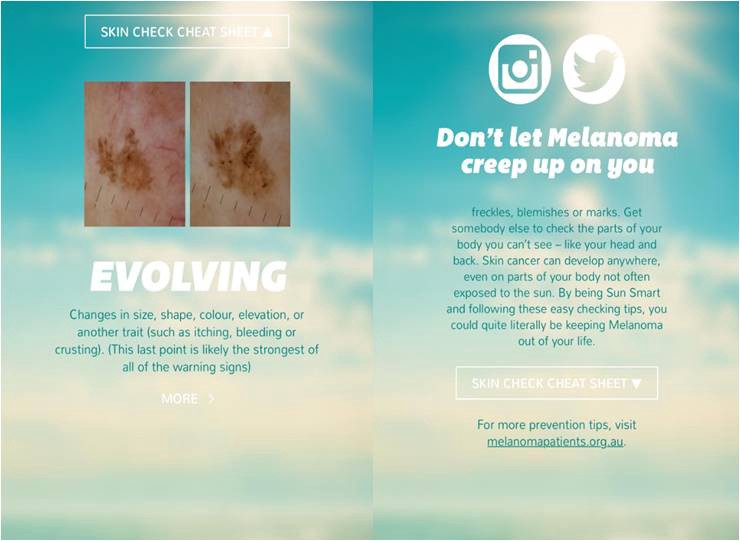The most original use of Instagram for skin cancer prevention
According to the prestigious Spanish dermatologist Dr Sergio Vañó @SergioVanoG, in Spain about 4,000 cases of melanoma are diagnosed each year. It is the most aggressive type of skin cancer, causing 1,000 deaths annually, according to the SEOM’s “Cancer Figures in Spain 2014” report.
Ultraviolet (UV) rays are, undoubtedly, a leading cause of many melanomas and, as we all know, most UV rays come from sunlight. At the beginning of the summer it seemed appropriate for my first post on the Cofares blog to share with you a creative initiative that is the first of its kind, and which I believe represents a very effective use of the Social Web as a communication tool to promote health.
It is the Melanoma Likes Me campaign, by the Australian agency Gpy&r, created and executed for the Australian Melanoma Patients Association. This social media action was recognised and awarded a Silver Lion last week at the Cannes Festival. Analysts praised it, like Jonathan Richman @jonmrichla, who called it “the best Healthcare Social Media campaign I’ve ever seen“.
The strategy adopted was very solid, as it was based on two realities we still have to preach at this point when talking about this new way of communicating – which, by the way, doubles the value of traditional advertising … and is also more convincing:
- Markets are online conversations: the first tenet of the Cluetrain Manifesto, published in 1999.
- Managing a brand on social media involves handling it as if it were a person. That is, it should listen, share and interact with the community as if it were another individual or a blogger, not from a distant position of authority that neither feels nor suffers.
Thus, this social media “person” was dubbed _melanoma, and was born on Instagram, the social network for images and micro-videos of up to 15 seconds.

The agency created an algorithm that made it possible to identify any image uploaded to Instagram and tagged by igersAustralians with key terms such as #beach #sun #sunbathing #beachvolleyball #surfing #pool #walkingonthebeach #swimsuitmark #heat, etc. If the images were geolocalized, even more accurate information was available.
With this information, _melanoma began to follow all those people who were tagging their photos with those terms, and to geolocate the images in high-risk areas.
It then interacted with them on their Instagram timeline; first, by “liking” the shared images and then posting thousands of personalised messages from _melanoma to users followed from this account.
And the messages were hardly politically correct, because it was _melanoma that spoke, revealing its true personality. They included creepy messages like these: “I love knowing you haven’t put on any sunscreen, it makes me feel like a child at Christmastime!; How many backs on their way to go surfing, I’ll have plenty to choose from!” etc.
The users followed by _melanoma, intrigued by this cheeky friend on Instagram, visited his profile and found this URL containing more information on him:
http://www.melanomaprevention.com.au/

Don’t let Melanoma scare you. More than a webpage, it was a simple landing page that performed its main function: to inform and educate its target audience in a quick and very visual way. Those users who wanted more in-depth information on prevention could visit www.melanomapatients.org.au.
An outstanding health-related social media campaign raising awareness of the physical dangers of prolonged sun exposure and not using adequate solar protection. Without a doubt, it constitutes a brave strategy and execution, for which the association and the agency deserve congratulations.
See you soon.
By Ángel González
Ideagoras


